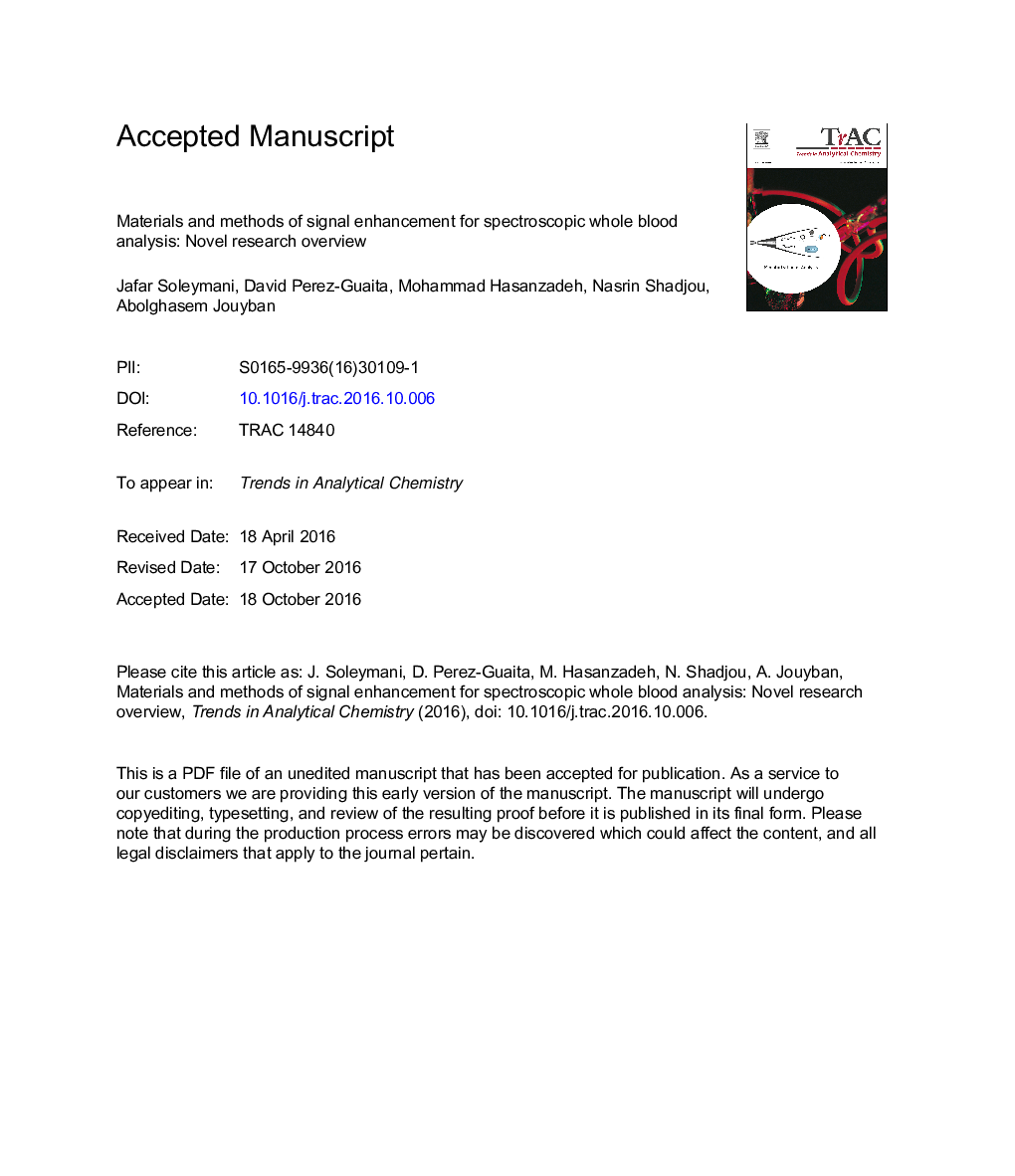| Article ID | Journal | Published Year | Pages | File Type |
|---|---|---|---|---|
| 5141732 | TrAC Trends in Analytical Chemistry | 2017 | 74 Pages |
Abstract
The early diagnosis of diseases is crucial for reducing morbidity and mortality and also for improving the quality of treatment process. Among various biological samples used to follow up the concentrations of disease markers, whole blood sensing can efficiently decrease analysis time by means of introducing methods with no pretreatment. In addition, the direct detection of markers in whole blood facilitates testing procedure and minimize the possibility of the loss of analytes in the process. Therefore, the assay of unprocessed whole blood is becoming increasingly important in clinical diagnostics and biomedical research. Incorporation of new advanced materials plays a major role in the spectroscopic sensing methods and improving the detection sensitivity of the optical probes. This review, comprehensively summarize the latest articles and patents from 2000 to 2015 on the application of new advanced materials for the detection of disease markers and environmental analytes in whole blood using intensity based optical methods. This review shows how new advanced materials have made significant contributions in the developments of intensity based optical sensing methods. More importantly, different aspects of the intensity based optical sensors such as type of advanced materials, detection techniques, analytes and the corresponding sensitivities have been discussed in details.
Related Topics
Physical Sciences and Engineering
Chemistry
Analytical Chemistry
Authors
Jafar Soleymani, David Perez-Guaita, Mohammad Hasanzadeh, Nasrin Shadjou, Abolghasem Jouyban,
